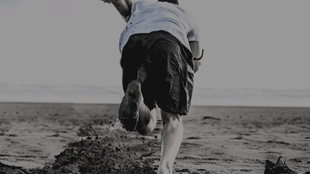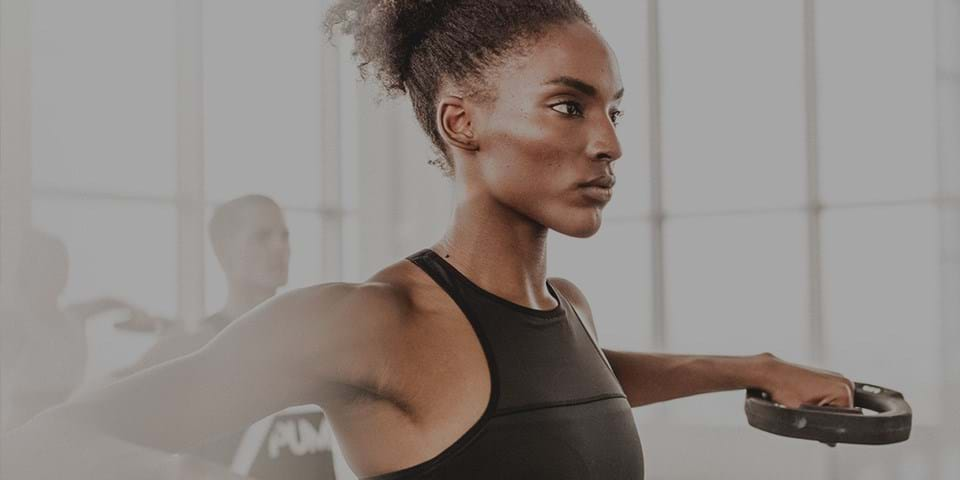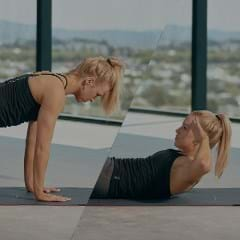Every day, in every corner of the globe, millions pound the pavement and raise their heart rate with a run. You only have to look at running shoe sales to see that running’s popularity continues to rise. In the United States alone, nearly 50 million pairs are sold each year.
But could the billions spent on shoes actually be a waste? A recent Danish consumer survey suggested expensive running shoes aren’t necessarily worth the investment – the 10 highest priced runners rated lower than the 10 cheapest!
Now let’s take it a step further and ask, do you need running shoes at all?
Since Ethiopian Abebe Bikila won the Olympic marathon barefoot (having discovered Adidas, the Olympic supplier, had run out of shoes in his size), the idea of shoeless running has, well, gained traction. Not long after, Shivnath Singh, one of India's greatest long distance runners, became famous for always running barefoot.
In 2009 writer Christopher McDougall published his bestselling Born To Run, which further boosted the argument that modern running shoes were to blame for many injuries, and that barefoot running was not just some crackpot theory. In particular, advocates have maintained that running without shoes can reduce the risk of repetitive stress injuries.
Running is an impact activity, so the risk of injury is high – and many runners, whether in shoes or not, will be familiar with at least one of the five most prevalent running injuries:
- Runner’s knee – pain under the knee cap
- IT band syndrome – pain on the outside of the thigh (anywhere from the hip to the knee)
- Shin splints – pain on the front of the shin
- Stress fractures – pain on the front of the shin or foot
- Plantar faciitis – pain on the bottom of the foot around the arch
Running as nature intended, barefoot fans believe, increases the strength of the muscles, tendons, and ligaments of the foot, improves balance and proprioception, which is your awareness of how your body moves, and reduces impact force with a forefoot landing.
But before you bin those runners, be sure you’ve heard the other side. Exercise expert and former triathlete Doctor Jinger Gottschall agrees there’s no doubt about the cardiovascular benefits of running, but believes that in most cases the risks of running barefoot outweigh any benefits.
“Firstly there’s the issue of cuts, bruises and blisters,” says Gottschall. “And it’s surprisingly difficult to find optimal locations to barefoot run to avoid debris on the ground.” Then there’s the issue of increased injury risk. “Barefoot running can lead to injuries in the muscles, tendons, and ligaments of the foot because of the increased impact and decreased stability from a shoe.” In some cases the shock of running barefoot can intensify the impact on the muscles and lead to injuries such as Achilles tendonitis or calf strain.
Gottschall explains that those who suffer from injuries born from barefoot running are typically those who overpronate, which means their foot rolls inward after it strikes the ground. According to Running Warehouse, most runners have at least mild overpronation, making these injuries to the heel and lower leg prevalent.
Gottschall doesn’t dismiss barefoot running completely, but suggests you’re most likely to enjoy any of the desired benefits if you do it occasionally for short periods (5-10 minutes). “Introduce small amounts for drills on soft surfaces such as grass or sand,” she says. “This will help strengthen the muscles of the foot and ankle. If you want to increase the time, be sure to do it in minimal increments.”
While running barefoot uphill is fine, she warns that running downhill can be dangerous due to the higher impact forces. Most importantly, she advises that you watch out for any pain at the arch of your foot, in your shin, ankle or knee.
As for the minimalist sneakers or “running socks” now in vogue, she says these may protect the feet from debris, but they won’t do much to reduce the risk of muscular injury. Gottschall’s opinion is backed up by a recent study highlighting how runners wearing minimalist running shoes ran no more efficiently than those in traditional running shoes. In fact, the study showed how runners who adopted the minimalist shoes suffered stress injuries and greater increases in inflammation causing excessive fluid in the bone.
It’s clear that for most of us running shoes are the way to go. But what type?
“The ideal running shoe is different for each person, and how you select the optimal footwear relies on understanding your individual biomechanics,” explains Gottschall. “For example, if you overpronate, a motion support shoe will help to reduce the strain at the foot, ankle, knee, and hip, as these shoes have a stiffer insole to reduce the inward motion.
“It all depends upon arch height, ankle angle, hip angle, mass, height, running surface, training goal, speed, surface – so understanding your biomechanics and training goals is critical to finding a shoe that fits.”
If you’re after a personalized, professional opinion, there’s an industry full of podiatrists, sports physicians and savvy retailers on hand to provide advice. But that’s not your only option. You can take matters into your own hands right now by checking out the bluffers guide to buying the perfect pair of sports shoes.
Jinger Gottschall, PhD, is an Associate Professor at The Pennsylvania State University, where she specializes in biomechanics and the neurophysiology of human locomotion. She is also a former triathlete who includes running as part of her regular workout regime. Dr Gottschall has led numerous studies into the effectiveness of various exercise regimes and works closely with Bryce Hastings, Les Mills Head of Research, to test all sorts of exercise programming.








